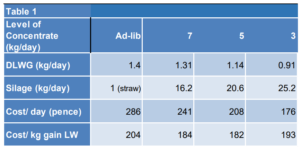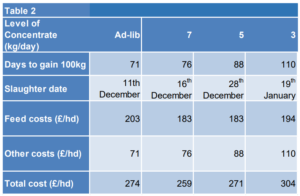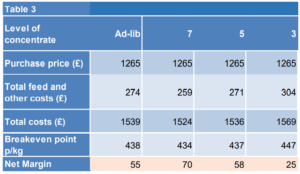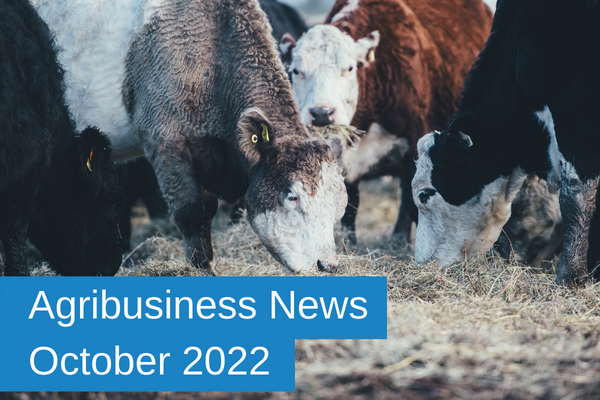Agribusiness News October 2022 – Sector Focus: Wintering Beef
30 September 2022Finishing cattle options this winter
With feed costs being a significant factor in the profitability of beef enterprises, it is often asked as to what the best way is to feed finishing cattle. Do we reduce the amount of grain fed and feed more home-grown forage such as silage, but admittedly this often leads to more days to finish.
On the flip side, for those short of forage this year, what are the implications in terms of finishing times and/or the cost of needing to buy in more concentrates?
Table 1 below shows the effect of supplementation of an average quality silage (30% DM; 10.6 ME) with varying amounts of concentrate for a steer in the midpoint of a finishing period.

Assuming silage at £40/t FW, feed barley at £252/t (ex-farm).
What the difference a day makes
Table 2 below shows the cost to finish this forward store steer including variable and fixed costs of bedding straw at 20p/day, labour at 45p/day, fuel at 20p/day, vet & med at 15p/day.
Assuming the steer is bought on the 1st October, the slaughter dates are calculated from the days to finish from that date.
The table above highlights the importance of carry out fast finishing on silage based diets. If good quality silage is available, then lower levels of concentrates can be fed whilst still achieving good performance.
Know your silage quality
To ensure good performance levels, it is important to know the quality of silage being fed. This can allow finishing costs to be reduced through the requirement for less concentrates if silage quality allows.
It is important to analyse different cuts separately and group bales accordingly, as differences in ME, protein levels and dry matter can all have an effect on the business achieving its daily liveweight gain or slaughter date targets.
Sale prices needed just to breakeven
Whilst these examples have not included all costs (such as machinery, interest, haulage) these can also be included to build up a fuller picture of the outcomes of the finishing enterprise.
If we assume a purchase price of 230p/kg for the 550kg steer, a final weight of 650kg and a kill out of 54%, the breakeven point for the enterprise using the costs shown are illustrated in the table below:
While the R4L price for the week ending 17th September of 454p/kg DW; it can be seen if this sale price is achieved the net margins above are small.
It is important for each producer to use their own cost figures to fully understand where their breakeven point and potential margins based on the various feed options available to them.
Seasonal effect
We must also be mindful of how the beef price changes in the run up to Christmas and into the new year as this will be when these animals are likely to be killed.
Sign up to the FAS newsletter
Receive updates on news, events and publications from Scotland’s Farm Advisory Service



